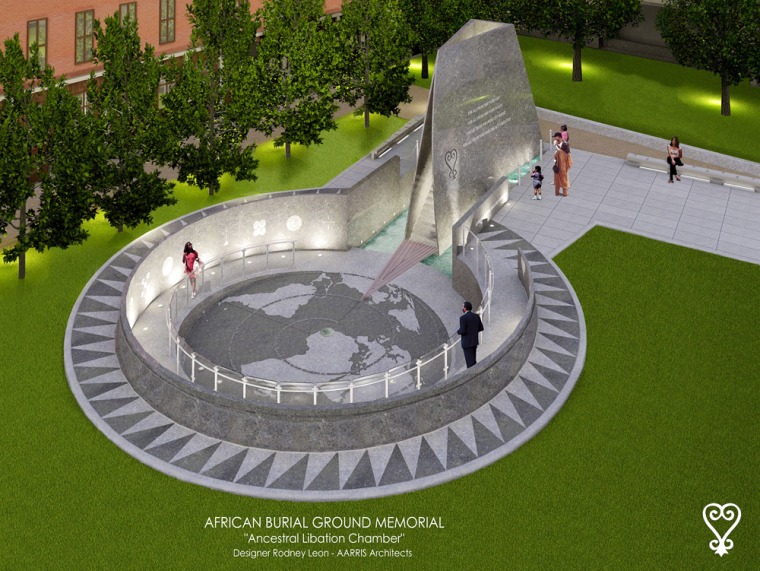As many as 20,000 slaves and free blacks who helped build New York’s economy from docks to warehouses will be honored with a memorial near their burial ground.
At a groundbreaking ceremony Wednesday, African drumbeats accompanied the unveiling of the $3 million design by Rodney Leon, a Yale-trained architect who has lived in West Africa.
“These people were part of a worldwide network of slavery, and they helped the New York economy run and thrive,” Leon said.
The monument’s design — a spiraling, sunken court made of granite from Brazil and Canada — includes symbols and hieroglyphics inspired by Leon’s time in Ivory Coast. Jutting up from one side will be a slender, 24-foot-tall “ancestral chamber” meant to represent “the soaring African spirit embracing and comforting all those who enter,” he said.
The colonial-era cemetery where the slaves were buried is nestled between lower Manhattan high-rise buildings, near City Hall and adjoining the building that houses the New York offices of the FBI.
Cemetery rediscovered
Closed in 1794, the five-acre burial ground was forgotten as a construction landfill eventually buried it 20 feet underground. When the cemetery was rediscovered during construction of a federal office tower in 1991, community pressure prompted the government to abandon the project.
The government declared the site a national historic landmark shortly after, and the remains were exhumed for research in the early 1990s. They were reburied in 2003.
More than 400 sets of remains were discovered, buried in coffins and wrapped in white shrouds. Officials estimate between 10,000 and 20,000 may have been buried at the site.
The monument is scheduled to be completed in about a year, with funding from the federal General Services Administration, which manages the site with the National Park Service.
